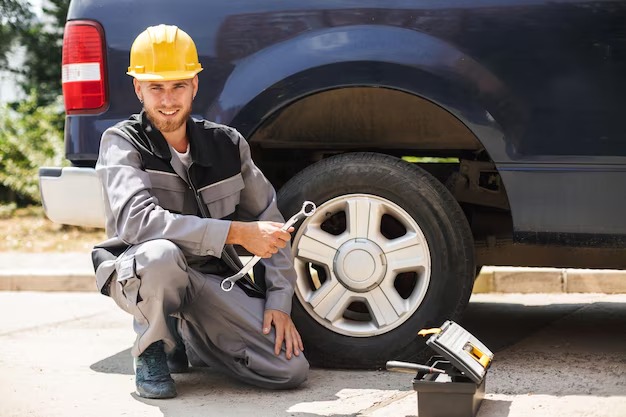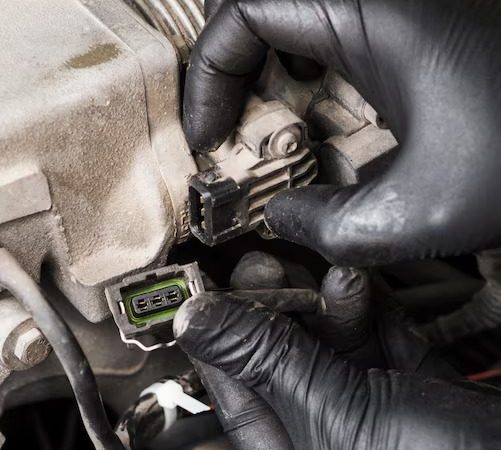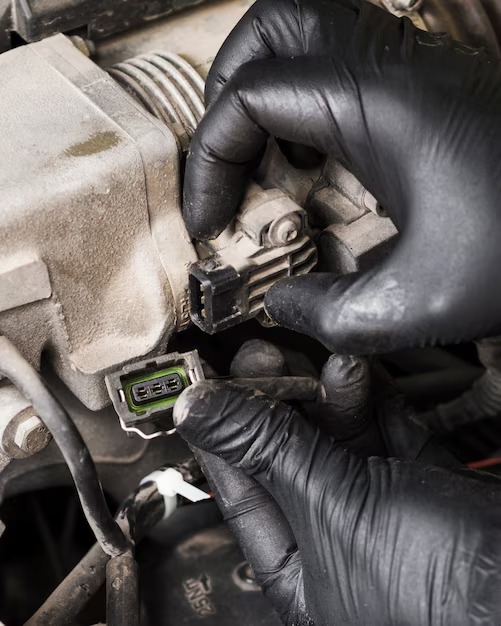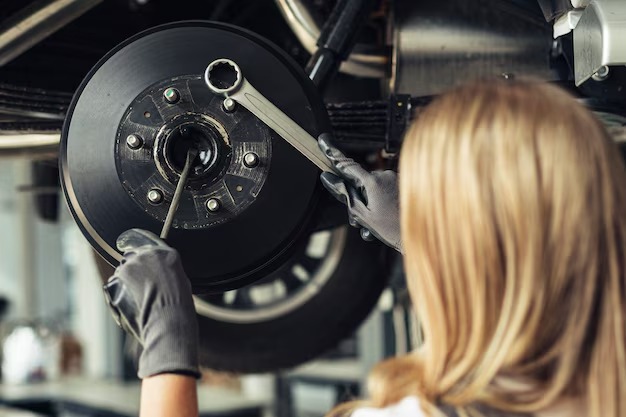Essential Steps to Take When Your Brakes Fail While Driving

Essential Steps to Take When Your Brakes Fail While Driving
Operating a motor vehicle involves an inherent element of risk, particularly when unforeseen complications arise. Among the most alarming scenarios a driver might encounter is the inability to slow down or stop effectively. Understanding how to navigate such situations is crucial for ensuring safety on the road.
Preparation and awareness play significant roles in managing these critical moments. By equipping oneself with knowledge and skills, an individual can potentially avert serious accidents and maintain control over their vehicle. Recognizing the signs of impending difficulties and having a strategy can make all the difference.
In this guide, you will discover essential techniques and best practices tailored for instances of mechanical distress. Along with immediate responses, proactive measures can facilitate greater confidence and security while on the journey. Keeping calm and making informed decisions is the key to overcoming this daunting challenge.
Understanding Brake Failure Risks
Awareness of potential hazards during vehicle operation is crucial for ensuring safe travel. Recognizing the factors that can lead to a reduction in stopping power allows drivers to adopt preventive measures and respond appropriately to emerging challenges. Understanding these risks is essential for maintaining control and enhancing overall road safety.
Causal Factors for Loss of Stopping Power
Several elements may contribute to decreased effectiveness of the stopping system. Regular wear and tear, lack of maintenance, and environmental conditions can all influence performance. Additionally, overloading the vehicle or using substandard components can exacerbate these issues, making it vital for drivers to routinely assess their vehicle’s condition.
Consequence of Ignoring Warning Signs
Neglecting symptoms such as unusual noises, vibrations, or changes in responsiveness can lead to severe outcomes. Early detection and addressing minor concerns can prevent escalation into critical failures. By being vigilant, operators enhance their safety and that of others sharing the road.
Immediate Steps to Take
Encountering a situation where stopping mechanisms are compromised requires prompt and calculated actions. Remaining calm is crucial as it can significantly influence the outcome of the incident. Here is a guideline detailing essential measures to undertake for enhanced safety.
Stay Calm and Assess
- Take a deep breath to maintain composure.
- Quickly evaluate the urgency of the situation.
- Observe surroundings for potential hazards or open areas.
Try to Slow Down
- Shift into a lower gear to naturally reduce speed.
- Gently pump the accelerator to enhance engine braking.
- Use the parking brake gradually, avoiding harsh pulls to prevent skidding.
Implementing these actions effectively can minimize risks and contribute to a safer resolution. Remember to stay aware and prioritize safety in all movements.
Safely Slowing Down Your Vehicle
Reducing speed effectively in critical situations is essential to maintaining control and ensuring safety on the road. Understanding various techniques can help navigate unexpected challenges, minimizing potential hazards. Each method has unique benefits that can be tailored to the situation at hand.
One effective approach involves downshifting to lower gears. This technique utilizes engine resistance to decrease acceleration, allowing for a gradual reduction in speed. It is crucial to coordinate this action with careful observation of surrounding traffic and road conditions.
Utilizing the steering system is another vital aspect in this process. Gentle maneuvering to a safe area or shoulder of the road can create additional space for slowing down. Always maintain awareness of obstacles and ensure that the intended path is clear before making any adjustments.
Engaging the emergency lights serves as an important signal to other drivers, alerting them of a potential issue. This can foster a cooperative atmosphere among vehicles, prompting others to give space and assist in the safe navigation away from danger.
Braking steadily while avoiding abrupt actions is key to maintaining vehicle stability. Gradually pressing down on the pedal can enhance control, allowing for an orderly deceleration. In instances where traditional braking is compromised, consider employing alternative methods such as gentle turns or light acceleration in a safe manner.
Always remember to remain calm and composed during such experiences. Panic can lead to hasty decisions that increase risk. By staying focused and implementing practiced techniques, any driver can enhance their ability to decelerate effectively, preserving their safety and that of others on the road.
Avoiding Accidents on the Road
Minimizing the risk of incidents while navigating highways and streets involves a combination of awareness, proactive measures, and adherence to best practices. Drivers should maintain focus, anticipate potential hazards, and ensure their vehicles are in optimal condition. By understanding critical behaviors and techniques, individuals can greatly enhance their safety and that of others around them.
Key Strategies for Prevention
Implementing several strategies can significantly reduce the likelihood of encounters leading to mishaps:
| Strategy | Description |
|---|---|
| Regular Maintenance | Consistently check and maintain vehicle components to ensure everything is functioning properly. |
| Defensive Driving | Stay alert, expect the unexpected, and be prepared to react appropriately to the actions of other road users. |
| Safe Distance | Maintain adequate space between vehicles to allow for stopping or changing lanes without colliding. |
| Proper Speed | Adhere to speed limits and adjust speed according to driving conditions and traffic flow. |
Situational Awareness
Understanding surroundings is crucial for effective navigation. Pay close attention to road signs, signals, and the behavior of other drivers. By continuously assessing the environment, individuals can identify potential dangers and adapt accordingly, thereby fostering a safer driving experience for everyone involved.
Using Emergency Features Effectively
In critical situations, knowing how to leverage the built-in safety mechanisms of a vehicle can make a significant difference. These features are designed to assist drivers during unexpected scenarios, allowing for better control and improved chances of avoiding accidents. Understanding their operation is essential for maximizing effectiveness.
Utilizing ABS and Traction Control
Anti-lock braking systems (ABS) and traction control systems are invaluable tools for maintaining stability. When faced with a sudden stop, hard braking activates the ABS, preventing tire lock-up and skidding. Instead of pumping the brakes manually, apply steady pressure to maximize control. Similarly, traction control assists in maintaining grip on slippery surfaces, automatically adjusting power to the wheels to prevent slipping.
Engaging Hazard Lights and Signals
It is imperative to communicate with other road users in emergencies. Activating hazard lights alerts nearby vehicles to your situation, promoting increased caution. Additionally, utilize turn signals to indicate direction and intentions, guiding those around you to anticipate your maneuvers more effectively.
Practicing these emergency features enhances familiarity and ensures readiness for unforeseen events. Regularly testing equipment, such as hazard lights and system indicators, ensures they are operational when most needed.
Seeking Professional Help Afterwards
After experiencing a critical incident with your vehicle’s stopping mechanism, it is essential to consult an expert. This step ensures not only your safety but also the security of those sharing the road with you. A qualified technician will conduct a thorough inspection and diagnose any underlying issues that may need addressing, thus preventing future complications.
Choosing the Right Mechanic
Selecting a skilled mechanic familiar with your vehicle type is crucial. Look for certified professionals with a solid reputation, and don’t hesitate to ask for recommendations or read reviews. A reputable technician will provide transparency about their findings and offer a detailed breakdown of necessary repairs and services.
Regular Maintenance Checks
Q&A: What to do if brakes fail
What should you do if your emergency brake fails while driving?
If your emergency brake fails, you should immediately downshift to a lower gear to help slow the car down.
How can you safely slow the car if the brake pedal becomes unresponsive?
If the brake pedal is unresponsive, you can downshift to a lower gear and gently take your foot off the accelerator to help slow the car.
What is the risk of not using the emergency brake when parked on a slope?
Not using the emergency brake on a slope can cause the car to roll away, leading you to potentially lose control of the vehicle.
How does the power steering assist with steering during an emergency situation?
Power steering makes it easier to turn the steering wheel, allowing you to maintain control of the vehicle even in emergency situations.
What is the first thing you should do if you feel like you might lose control of your vehicle?
If you feel like you might lose control, you should firmly grip the steering wheel and take your foot off the accelerator to stabilize the car.
How can downshifting help if your brakes are failing?
Downshifting can help slow the car by utilizing engine braking, which reduces speed without relying solely on the brake pedal.
What should you avoid doing when trying to regain control of a skidding vehicle?
You should avoid slamming on the brake pedal, as this can cause further loss of control; instead, focus on steering and gently easing off the accelerator.
How can using the emergency brake improperly lead to accidents?
Using the emergency brake while driving at high speeds can cause the wheels to lock up, leading to a loss of control and potential accidents.
What is a common mistake drivers make when trying to slow the car in an emergency?
A common mistake is panicking and pressing the brake pedal too hard instead of gradually applying pressure while also downshifting.
What role does taking your foot off the accelerator play in controlling a vehicle?
Taking your foot off the accelerator helps reduce speed naturally and allows for better control of the steering wheel during critical driving situations.
What should you do if you experience complete brake failure while you’re driving?
If you experience complete brake failure while you’re driving, you should first try to pump the brake pedal to build up brake pressure. If that doesn’t work, downshift to a lower gear to help slow the car and use engine braking.
How can downshifting help if your brakes suddenly fail on the road?
Downshifting helps by using engine braking to slow the car. This method can help you regain control of the vehicle and safely stop your car without relying solely on the brakes.
What is the best way to stop your car if the brake line has failed?
If the brake line has failed, you should try to apply the emergency brake gradually. If that doesn’t work, shift into neutral and then apply the parking brake to bring the car to a complete stop.
What should you do if your brakes are not working while driving downhill?
If your brakes are not working while driving downhill, scan the road ahead for a wide shoulder or an area where you can safely stop your car. Use engine braking by downshifting to help slow the vehicle.
How can pumping the brake pedal assist in regaining control of the vehicle?
Pumping the brake pedal can help build up hydraulic pressure in the braking system, which may allow you to regain some braking capability and help slow the car down.
What steps should you follow if your car begins to skid and lose control?
If your car begins to skid and lose control, take your foot off the accelerator, steer into the skid, and avoid slamming on the brakes, as this could cause you to skid further.
What is an important tip for preventing accidents when driving a car with known brake issues?
An important tip is to have your brakes serviced regularly. If you know your brakes are not working properly, avoid driving a car until they are fixed to prevent accidents.
How does losing your brakes affect your ability to stop the vehicle?
Losing your brakes means you won’t be able to use them to stop the vehicle effectively, which could cause you to skid or lose control of the car, especially in an emergency situation.
What should you do if you notice your brake fluid is low while behind the wheel?
If you notice that your brake fluid is low while behind the wheel, it’s crucial to pull over safely and stop the vehicle. Check for leaks and have the brakes serviced as soon as possible.
Why is it important to apply the parking brake when parking on a slope?
Applying the parking brake when parking on a slope is essential because it prevents the rear wheels from rolling and ensures that your car stays in place, avoiding an accident or injury.







